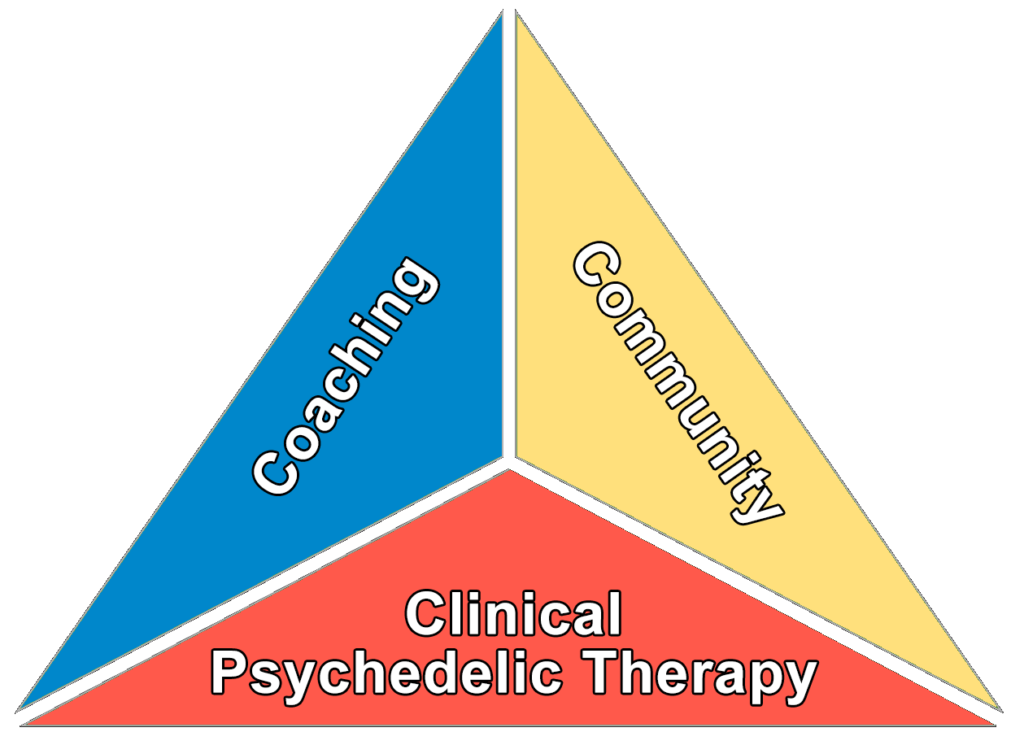Our culture stands at a critical crossroads as we confront the consequences of swift technological progress. The rapid advancement of technology is unparalleled, and in our pursuit of convenience and productivity, we have unwittingly allowed our connections with nature, our communities, and even ourselves to dwindle. This gradual erosion has led to a decline in our overall well-being, manifesting in ways that are challenging to fully grasp.
You might be thinking, “Yes, that’s right, I live in a world where life is beyond challenging. My family and friends are often difficult to get along with, world leaders are making bad decisions, and our planet is in an existential crisis … and that leaves me feeling anxious, lonely, and depressed. But what can I do?”
While it may be beyond the capacity of any individual to single-handedly decelerate the pace of technological advancements or resolve global issues, there are specific measures you can undertake to flourish in our rapidly evolving society:
Modify your environment: This could involve making changes to your current job, such as seeking a position with a slower pace or considering a move to a smaller community or even a different country. In certain instances, it may be beneficial to consider creating distance from stressful relationships or seeking out new, supportive relationships.
Take ownership of the perspective through which you perceive the world: This requires the investment of time and effort to enhance your overall well-being. It could involve actively seeking ways to improve your mental health, exploring techniques for personal growth, or fostering deeper connections with nature, others, and most crucially, yourself.
The second approach holds a significant advantage in terms of its universality, as it can benefit you irrespective of your geographical location or the individuals in your immediate surroundings. That is precisely why the Project New Day healing philosophy places a high priority on adopting an “improving perspectives and connections” approach.
“Not the world, not what’s outside of us, but what we hold inside traps us. We may not be responsible for the world that created our minds, but we can take responsibility for the mind with which we create our world.” In the Realm of Hungry Ghosts: Close Encounters with Addiction
How then do we grow, improve our mental health, and foster deeper connections?
How do we transcend the fear-based, pessimistic thought patterns that trap us?
How do we learn to move forward with a clear direction and sense of purpose?
The first best step is to realize that rigid, pessimistic thought patterns and lack of connection are generally caused by early childhood trauma.
Trauma can be defined as an event, experience, or series of events that overwhelms an individual’s ability to cope, resulting in a lasting impact on their emotional, psychological, and physical well-being.
Aligning again with Gabor Maté’s views, we believe that trauma is not so much what happened to you, but instead, it is about how an individual’s nervous system and psyche respond to overwhelming experiences. Dr. Maté emphasizes that two people can experience the same event, yet one may be traumatized while the other may not. This distinction arises from the individual’s unique perception, internal resources, and coping mechanisms.
In the psychological literature, trauma is often divided into multiple types, often drawing from psychiatrist and trauma expert Judith Herman’s influential book Trauma and Recovery: The Aftermath of Violence–From Domestic Abuse to Political Terror (1992). In that work, Herman outlines three distinct categories of trauma:
This refers to single-incident traumas, such as accidents, natural disasters, or assaults, where the traumatic event is finite and identifiable. Type I trauma is often referred to as “simple trauma” or “acute trauma.”
This category encompasses prolonged or repeated traumatic experiences, typically occurring within interpersonal relationships or oppressive situations. Examples include domestic violence, child abuse, ongoing warzone exposure, or extended captivity. Type II trauma is often referred to as “complex trauma” or “chronic trauma.”
This category refers to the trauma experienced by individuals who are exposed to the traumatic experiences of others, such as witnessing violence, hearing about traumatic events, or providing support to traumatized individuals. It is often referred to as “vicarious trauma” or “secondary trauma.”
Frequently, Herman’s “Type III Trauma” is omitted and the Type II is divided into two categories:
(repeated exposure to stressful events, such as bullying or domestic violence.)
(exposure to events that cause severe distress such as sexual abuse or torture.)
What is important to understand is that trauma can be as simple as chronic neglect, familial tension, or simply not having one’s basic needs met over an extended period. Ideally, children in their development stages should experience a safe, loving environment where the relationships between them and their parents, siblings, teachers, and friends are largely supportive and harmonious. Children, especially in their first few years, generally are unable to externalize their feelings. When a child’s environment is not ideal, the unpleasant feelings are not interpreted as, “I’m perfectly fine, I wonder why my parents are arguing?” Instead, they are more likely to think, “There is something wrong with me.” When thoughts such as these are the norm and not the exception, they become second-nature beliefs that can lead to low self-esteem, anxiety, and depression.
The lack of a fully loving environment can lead to “self-protective barriers,” which occur not only as a result of painful experiences but even as they are taking place. That is to say, much of the pain we all have experienced was not deeply felt, even when it was occurring. These self-protective barriers, also known as defenses, represent the innate adaptive mechanism of the human brain for ensuring survival. Nonetheless, over time, these defenses become counterproductive. Just as physical scars can generate hardened areas around wounds, emotional trauma can give rise to inflexible and pessimistic thought patterns. Ultimately, what was once essential for survival can result in a feeling of detachment from ourselves, others, and the natural world.
Due to the cunning nature of our brains and their ability to employ avoidance tactics, it can be difficult for us to fully comprehend the profound impact that our early experiences have had on us and how they continue to shape us. Our distorted thoughts, beliefs, and patterns of behavior are then passed down from one generation to the next, perpetuating a cycle. This can be observed in our inclinations to easily disengage from our communities, disregard our physical environment, and struggle to be fully present with the people we care about, including ourselves.


As mentioned above, these disconnections are exacerbated by the increasing prevalence of technology in our lives. While technology can offer numerous benefits and conveniences, its pervasive use contributes to further isolation from ourselves and the natural world in the following ways:
Concerning the last item, the allure of technology, with its instant gratification and virtual connections, may be particularly appealing to those who are already feeling disconnected from themselves, others, and nature. Individuals who are experiencing social isolation, loneliness, or lack of access to natural environments often seek solace and escapism in the virtual world offered by technology, which in turn perpetuates the cycle of disconnection.
Note: It is important to acknowledge that technology itself is not inherently isolating or detrimental to our connection with ourselves and nature. The pivotal factor lies in how we consciously and mindfully engage with technology, striving to strike a balance that enables us to leverage its advantages while simultaneously nurturing our connection with our inner selves and the natural world.
The Project New Day healing philosophy is about helping participants reconnect with their true selves and others by transcending rigid thought patterns. This can be accomplished with the following triad:
Summaries of the three triad elements are below. To fully understand the Project New Day healing philosophy, be sure to read the “Details” section of each element.
* Project New Day does not provide psychological or medical treatment, or recommend or administer psychedelic therapy to anyone. The responsibility for this falls on other organizations that adopt our program model, guided by legal and professional statutes along with individual suitability assessments conducted on a case-by-case basis.

Details about the “Coaching” element of the Project New Day Program triad.
Instructions for Project New Day coaches.
Training requirements for Project New Day coaches.
Details about the “Clinical Psychedelic Therapy” element of the Project New Day Program triad.
Instructions for Project New Day clinical psychedelic therapy.
Training for psychedelic session facilitators: The Project New Day healing program requires partnering with legally licensed clinical facilitators for the psychedelic therapy component of its model. As such, Project New Day expects the psychedelic session facilitators to have trained as required by their respective governmental bodies and does not offer training courses per se.
Details about the “Community Building” element of the Project New Day Program triad.
Instructions for Project New Day community facilitators.
Training requirements for Project New Day community facilitators.
What are the roots of addiction? Is it a genetic disease that needs to be managed medically? How does the Project New Day approach to healing addiction compare to contemporary modalities? To fully understand the PND overall healing philosophy, see The Project New Day Addiction Philosophy.
In essence, the Project New Day Program model is designed to help people connect with themselves, others, and the environment, and to discover new possibilities through compassionate, knowledge-based coaching, clinical psychedelic therapy, and follow-on community sessions.